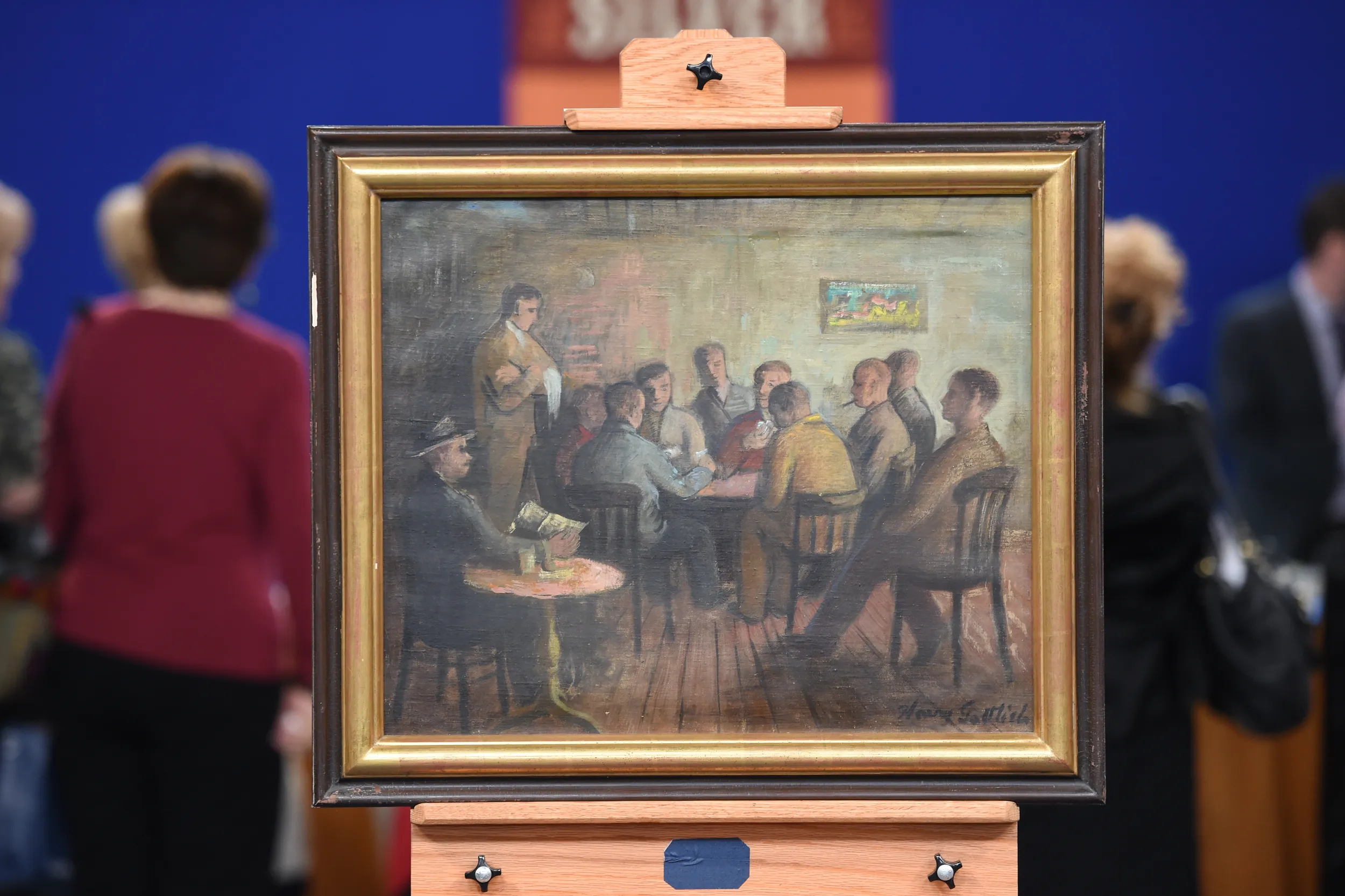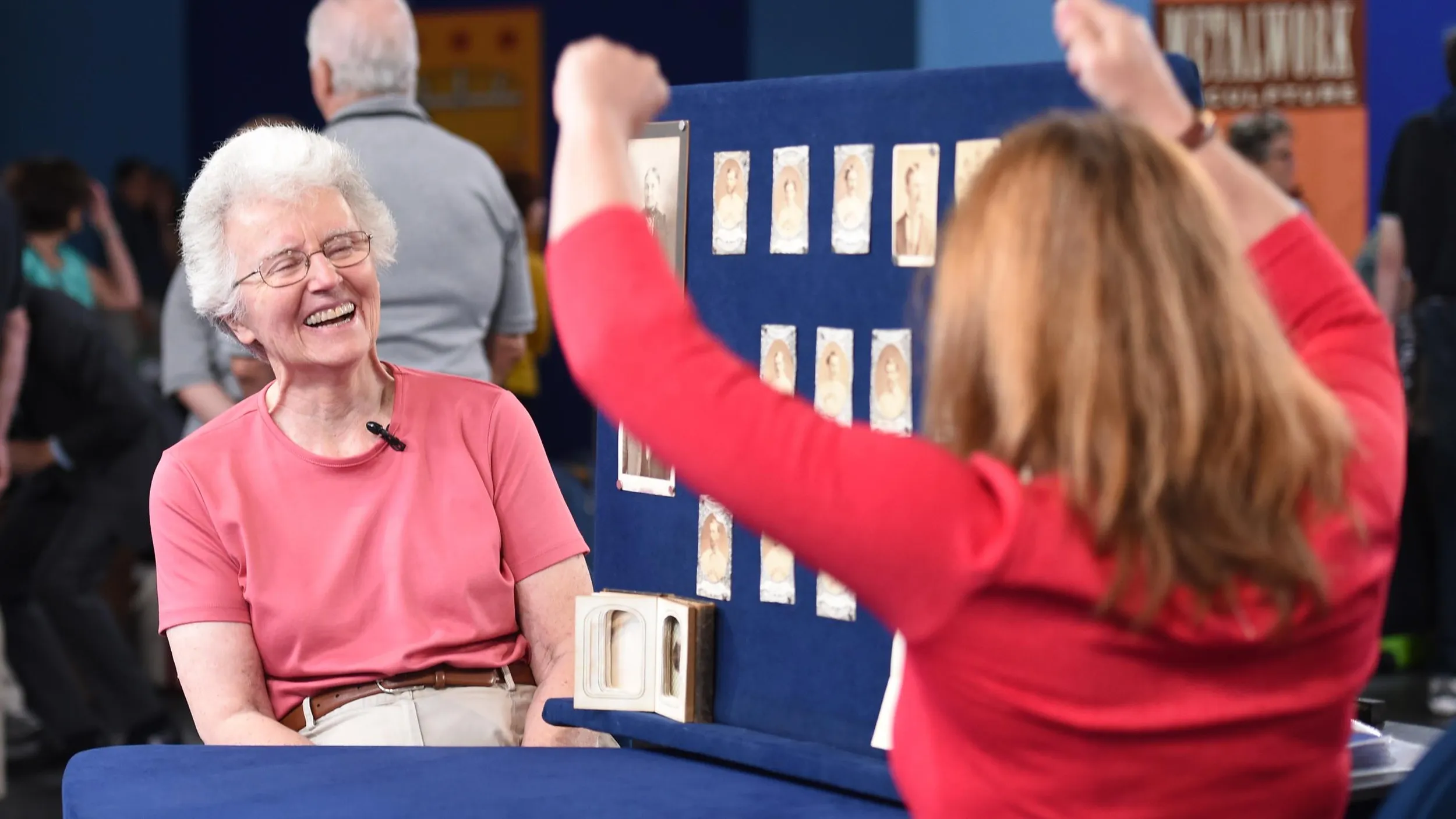GUEST: The artist that I bought it from lived in New York City, I believe. I went to an art show where other artists were showing their wares. I looked at this painting and I liked it, and the artist came over to me and he explained that these people who are playing cards were really talking about politics, but they couldn't say anything because of the political situation around World War II. And it looked like these people were intent on something, and many people were looking at their cards. So I liked it. My wife said, "Why don't we buy it?" It's my wife who's responsible, who likes art, and she got me involved in it.
APPRAISER: That's nice for you to give her credit.
GUEST: She deserves all of it.
APPRAISER: The artist's name is Harry Gottlieb, and this is oil on canvas. Gottlieb is an interesting fellow because he is kind of emblematic of the social realist school of painting in New York in the mid-20th century.
GUEST: Uh-huh.
APPRAISER: He came to America as a child with an immigrant family from Romania in the early part of the century, settled in Minnesota, and as a young man, came to New York and studied art. And he was kind of a renaissance man because he was both a painter and a very capable printmaker as well as an art educator. And he was very politically attuned. He was involved in the pro-labor movements. I believe that he became a communist. The social realists were really very worried about the common man and felt there should be more government programs for people and so on, and they were at odds with a lot of other folks. I think the picture is very beautiful. It's typical of these paintings that have a kind of a gritty, dark feeling about them. They're not really cheerful pictures, and yet this big, bright blot of color up here draws your eye right into the picture, I think, even though the overall tonality is kind of the blacks and the grays. And then when you look at it more closely, you see all the pinks and the yellows and the blues, and I think his skill and his background as a printmaker shows through this painting. He's probably known a bit more today as a printmaker, so his paintings are quite rare. You bought it from the artist.
GUEST: Yeah.
APPRAISER: And that would have been about when, do you think?
GUEST: About 1984.
APPRAISER: Okay, how much did you pay for it when you bought it?
GUEST: My wife told me to pay $500 for it, and if it's worth more than $500, I get all the credit, if it's worth less, I blame her. (laughs)
APPRAISER: Well, I think you'll get some credit. I think if this picture were to appear at auction today here in New York in a major sale, it would carry an estimate of between $15,000 and $20,000.
GUEST: Oh... (laughs) Wow. Had I known that, I would have bought more paintings from him.
APPRAISER: I wish you had!
GUEST: Oh, my.
APPRAISER: So you have a surprise for your wife.
GUEST: I do.





